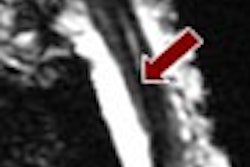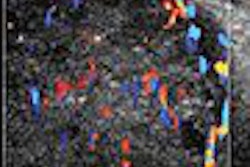A single U.S. District Court in Ohio has been assigned to handle the discovery phase of all patient injury lawsuits filed in federal courts related to gadolinium and nephrogenic systemic fibrosis (NSF). The move is expected to speed up the legal process for the cases, and could lead to either earlier trials or settlement of the litigation.
The U.S. District Court for the Northern District of Ohio under Judge Dan Polster will oversee the discovery process, with discovery for all federal gadolinium/NSF lawsuits centralized to take place in that jurisdiction. The move is fairly common for cases in which multiple plaintiffs have filed suit against a small number of defendants, legal experts said.
The decision was made by the U.S. Judicial Panel on Multidistrict Litigation (MDL), which determines whether similar civil cases filed in different federal district courts can be centralized to a single district court for pretrial proceedings.
Growing litigation
Nearly all the major MRI contrast agent developers have been hit with lawsuits charging that their gadolinium-based products have caused NSF in patients undergoing contrast-enhanced MRI exams. NSF is a debilitating skin disorder believed to be linked to gadolinium deposition in the human body, although the etiology of the disease is still not fully understood.
Companies involved in litigation include Bayer HealthCare Pharmaceuticals of Wayne, NJ; Bracco Diagnostics of Princeton, NJ; GE Healthcare of Chalfont St. Giles, U.K.; and Mallinckrodt, a division of Covidien of Hazelwood, MO.
In making the decision to centralize the lawsuits, the MDL panel heard arguments from plaintiffs and defendants involved in 24 actions in 13 federal court districts. Some 44 related actions have been filed in other U.S. courts, according to the panel's ruling.
One plaintiff, Bracco, argued against centralization of all cases, making the point that the contrast agents from different manufacturers are chemically and pharmacologically different, and that a centralized case would "impinge upon the due process rights of the separate defendant companies." In addition, Bracco argued that when each defendant was considered separately, apart from the claims involving GE, there were too few actions to warrant MDL treatment, and alternatives to centralization were available.
However, the MDL panel ruled against this logic, citing legal precedent to support centralization. All the lawsuits involve common questions of fact, and centralizing pretrial actions such as the discovery process "will serve the convenience of the parties and witnesses and promote the just and efficient conduct of this litigation," the panel said.
What exactly does centralization mean for the case? According to one plaintiff's attorney involved in the litigation, it will streamline the litigation process and enable both plaintiffs and defendants to go through the discovery process once per defendant, rather than for every individual case, according to Jerry Parker of Parker Waichman Alonso of New York City.
"I think it was a correct move," said Parker, whose firm is handling about 20 NSF cases. "For all federal cases pending in the U.S. to consolidate before one judge was extremely appropriate."
The discovery phase may begin by using a "generic" process of finding facts that are common to all the cases, he said. Then, it's possible that Polster will select a set of "bellwether" cases that have characteristics that can be applied to many other lawsuits. With those cases, a case-specific discovery process would take place and the parties would prepare for trial, which would take place in the jurisdictions in which the cases were originally filed.
Setting up a settlement?
The discovery process can often provide the parties involved with a good idea of the strength of their positions, and in some cases can prompt parties to pursue settlement rather than a long and expensive trial, according to Larry Gornick of Levin Simes Kaiser & Gornick in San Francisco. The firm is representing plaintiffs in 16 cases.
Gornick believes that the strong connection between gadolinium and NSF -- there are no other known causes of NSF besides gadolinium, he said -- and the fact that it's fairly easy to prove that a patient has NSF weigh in favor of settlement. Another factor in favor of settlement is the relatively small number of affected individuals when compared with more high-profile product liability cases such as Vioxx or tobacco litigation.
"If there were more than 1,000 (NSF) cases I'd be surprised," Gornick said. "This is the kind of litigation that the companies should be able to assess very quickly in terms of the scope. It has all the hallmarks of something that should settle."
An initial meeting between the parties involved and the court took place on March 5, and a status conference is scheduled for April 8, he said.
Not included in the MDL panel's ruling are lawsuits filed in state courts. Whether those cases can be consolidated or centralized depends on the state: some states, like New Jersey and New York, have rules providing for centralization, while others, like Florida, do not. Once a group of cases accumulates in a state, then a move is typically made to consolidate, provided the state's legal rules support it, Parker said.
With the exception of GE and Covidien, MRI contrast developers contacted to comment on the centralization move declined to comment or were unavailable as of press time.
"Under this procedural action, these cases have been consolidated for pretrial purposes. But we look forward to the earliest possible opportunity for the court to examine the science involved in these issues," said GE spokesperson Ryan Fitzgerald. "It's important to remember that NSF was only identified with MRI contrast agents in 2006, and that GE Healthcare acted promptly to cooperate with regulators and to warn physicians about the possibility of a connection with NSF."
Covidien declined to comment on the litigation specifically, but the company is working with the FDA to investigate the relationship between gadolinium-based contrast agents and NSF, according to company spokesperson JoAnna Schooler. She pointed out that Covidien and other U.S. suppliers of gadolinium contrast provided guidance on using the agents in a "Dear Healthcare Professional" letter on September 12, 2007.
"The company recommends that all customers follow the product's prescribing information and any guidelines that have been issued by their governmental health authority on the use of gadolinium-based contrast agents," Schooler said.
By Brian Casey
AuntMinnie.com staff writer
March 21, 2008
Related Reading
Contrast firms hit with another NSF lawsuit, March 18, 2008
ECR NSF studies raise as many questions as answers, March 7, 2008
Study offers more evidence that multiple factors up NSF risk, January 24, 2008
'Uniquely higher' relaxivity rates give gadobenate an edge, January 23, 2008
Studies outline techniques for ramping up MR in renal artery imaging, January 10, 2008
Copyright © 2008 AuntMinnie.com



















